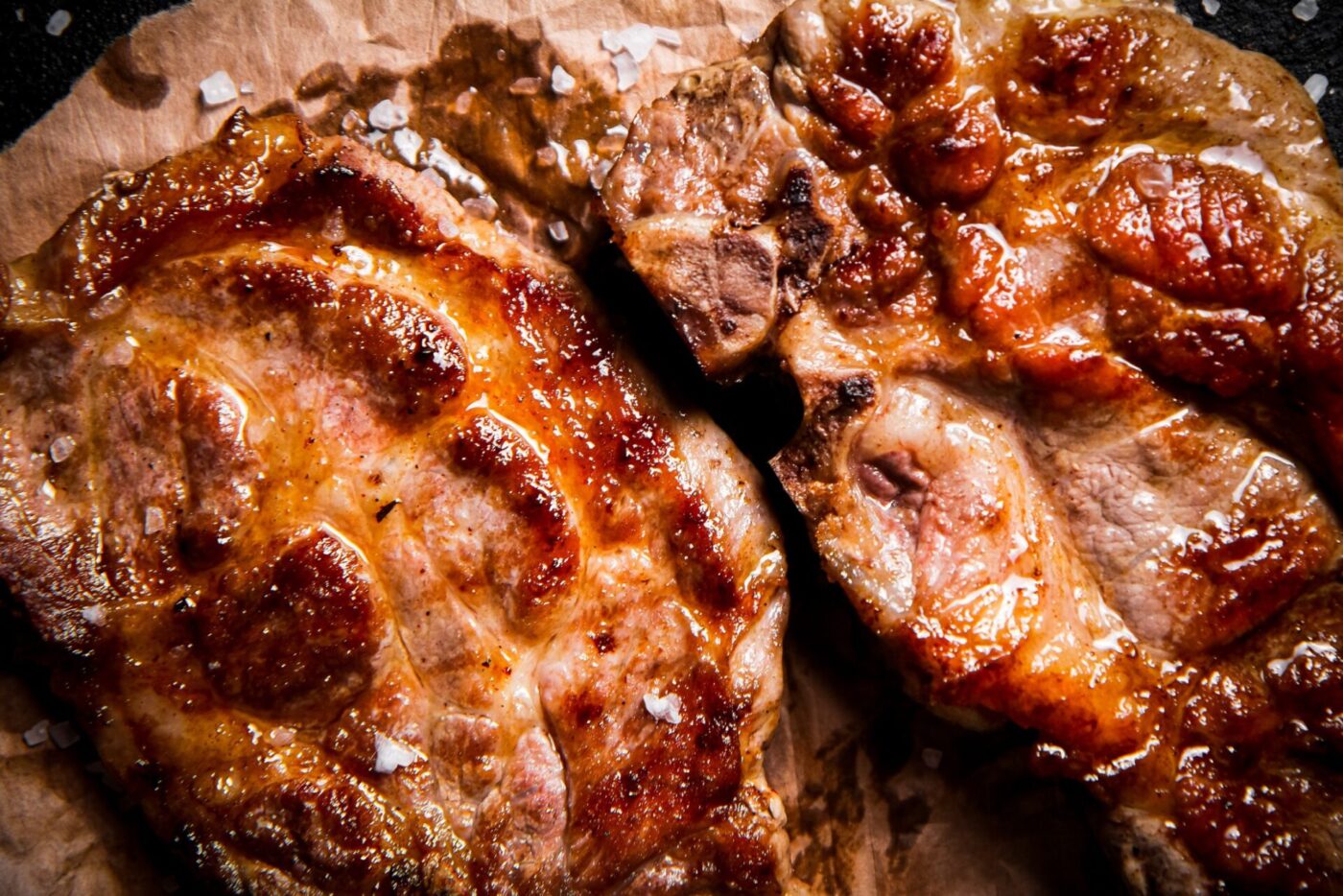Read More: Culinary History of Pork Chops (Boneless)
The Rise of the Boneless Chop: A Confluence of Factors
The shift towards boneless pork chops as a popular and widely available cut is primarily a 20th-century phenomenon, driven by several interconnected factors:
- Centralized Meatpacking: The rise of large-scale, centralized meatpacking plants in the late 19th and early 20th centuries revolutionized the meat industry. These plants had the equipment and labor force to efficiently process large numbers of animals and produce standardized cuts.
- Refrigeration’s Impact: Widespread refrigeration was absolutely critical. It allowed meatpackers to ship and store cuts of meat for longer periods, making it feasible to sell specific, boneless cuts like pork chops to a wider market.
- The Loin’s Value: The pork loin, from which most boneless chops are cut, became increasingly recognized as a premium cut. It was tender, lean, and relatively easy to cook. Meatpackers saw an opportunity to maximize profits by separating the loin from the bone and marketing it as a distinct, desirable product.
- Changing Consumer Preferences: As societies became more urbanized and affluent, consumers increasingly valued convenience and speed in the kitchen. Boneless pork chops, requiring less cooking time and no carving around bones, fit this demand perfectly.
- Marketing and Branding: Meat producers and retailers actively marketed boneless pork chops as a healthy, versatile, and easy-to-cook option. Cookbooks and magazines featured recipes highlighting the cut, further solidifying its place in the American diet.
- The Supermarket Revolution: Supermarkets replaced local butchers as the source of most meat. The pre-cut, pre-packaged, boneless chop was a perfect product for a self-service enviroment.
The “Other White Meat” Campaign and the Boneless Chop’s Heyday
The 1980s saw a significant marketing push that further cemented the boneless pork chop’s popularity. The National Pork Board launched the “Pork. The Other White Meat” campaign, positioning pork as a healthy alternative to beef and chicken.
- Lean Appeal: The campaign emphasized the leanness of pork, particularly cuts like the loin and, by extension, boneless chops. This resonated with health-conscious consumers who were increasingly concerned about fat intake.
- Versatility: The campaign also highlighted the versatility of pork, showcasing how boneless chops could be used in a wide variety of dishes, from simple pan-fried preparations to more elaborate recipes.
- Sales Boom: The “Other White Meat” campaign was incredibly successful, significantly boosting pork consumption and solidifying the boneless pork chop’s place as a staple in American kitchens.
Modern Trends and Considerations
While boneless pork chops remain popular, there’s been a growing awareness of some of the potential downsides of prioritizing leanness and convenience above all else:
- Flavor Trade-Off: Removing the bone does remove some flavor and can lead to drier chops if not cooked carefully. The bone and surrounding fat contribute to both taste and moisture retention.
- Overcooking Concerns: Boneless chops, especially thinner cuts, are prone to overcooking, resulting in a dry, tough texture. Proper cooking techniques, like brining or using a meat thermometer, are crucial.
- Heritage Breeds and Marbling: There’s a growing appreciation for heritage breed pigs, which often have more marbling (intramuscular fat) than conventional pork. This marbling contributes to flavor and juiciness, even in boneless cuts.
- The Return of the Bone-In Chop: Some chefs and home cooks are rediscovering the benefits of bone-in pork chops, appreciating the added flavor and moisture they provide.
Global Perspectives
While boneless pork chops are particularly popular in the United States, they are also found in many other cuisines around the world.
- Asian Cuisine. Thinly sliced boneless pork chops are frequently used in stir-fries, noodle dishes, and other Asian preparations.
- European Cuisine: Boneless pork chops are used in various European dishes, often breaded and pan-fried (like schnitzel) or incorporated into stews and casseroles.
- Latin American Cuisine: Boneless pork chops are marinated and grilled, or used to make dishes like chuletas fritas (fried pork chops).
In Conclusion: Convenience and its Consequences
The culinary history of the boneless pork chop is a story of how changing consumer preferences, advancements in food processing and distribution, and marketing campaigns can dramatically alter the way we eat. From a cut that was largely a byproduct of the desire for a uniform, marketable pork loin to a supermarket staple, the boneless chop reflects the modern emphasis on convenience and leanness. While it remains a popular and versatile choice, there’s a growing recognition of the importance of balancing convenience with considerations of flavor, texture, and the benefits of traditional butchering practices. The future of the boneless pork chop may well involve a greater appreciation for the nuances of different breeds, cooking methods, and the enduring appeal of a perfectly cooked, juicy piece of pork, whether bone-in or boneless.



Share
Click on the icons below to share "Title of the item to share"